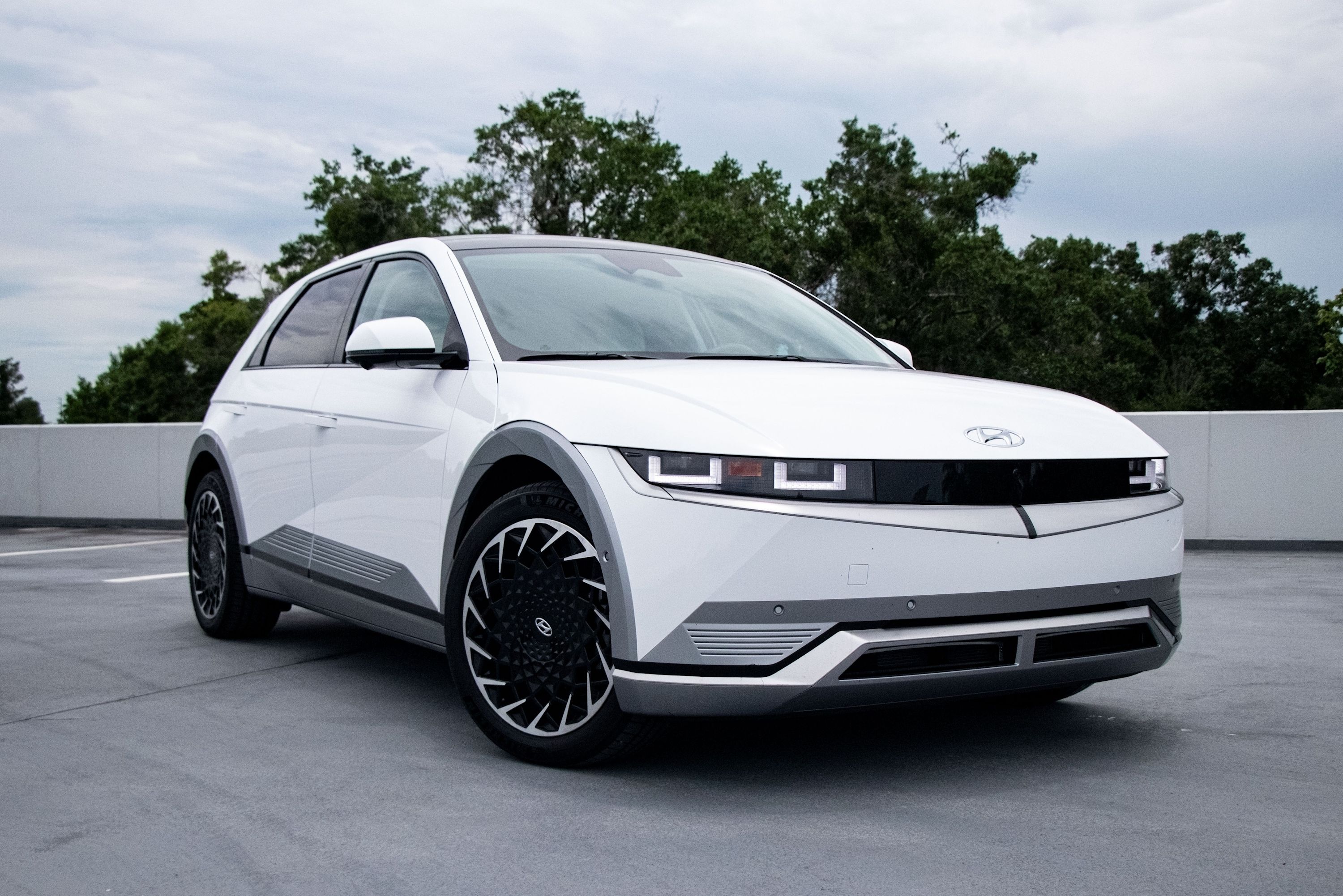
Right now, despite some whisperings from Ford and other OEMs, that shiny new EV in your driveway only operates in one direction. No, we're not talking about a lack of reverse gears like an F1 car. Instead, we're talking about the flow of energy. Here's how it works right now: Power is made in (insert manufacturing method here), then it runs through some fancy electrical witchcraft, ultimately ending up at the very tip of that charger you're about to toss into the side of your Hyundai Ioniq 5.
Hyundai calls the plan "Vehicle-to-Everything." Folded into that is something called "Vehicle-to-Grid" (V2G). It's, well, exactly what it sounds like. Instead of the situation above, the power can run from your new Ioniq 5, through the charging cable, and into (insert electronic item here).
Hyundai says that in addition to stabilizing the grid, energy stored in EVs feeds the grid, assisting in managing energy demand during emergencies or peak use hours, like evenings and mornings. Right now, Hyundai is running two pilot projects in the Netherlands and Germany using fleets of modified Ioniq 5 models equipped with the V2G software. First, that's great news because it sounds to us like all that's needed to implement this tech is a simple software update. Second, we feel there could be a slight hiccup. We're not sure how consumers will feel about sharing their juice with "the grid."
However, Hyundai was quick to assuage those concerns, saying the program offers benefits to owners, the grid, and the environment. During peak use hours, EVs will be able to return energy to local infrastructure and help even out demand. That means lower charging costs for owners.
Additionally, this tech could help decarbonize the way we get our energy. Electricity generated from renewable energy sources can be stored in EVs, then put back into the grid, cutting out some dirtier methods of producing electricity.
The biggest benefit to owners will be that your EV will be able to power larger appliances or even a home. Right now, we're going to have to wait to see how those pilot programs in the Netherlands and Germany go. Those findings will influence how this tech spreads to cars like the Ioniq and Kia EV6, which we imagine will use the same V2G tech. They're the same company, after all. And if Hyundai and Kia can share, can't we all share a little bit of energy to make things greener?
